10 LOST architectural wonders of Moscow (PHOTOS)

1. Bolshoy Kamenny Most (Big Stone Bridge): 1680s – 1858
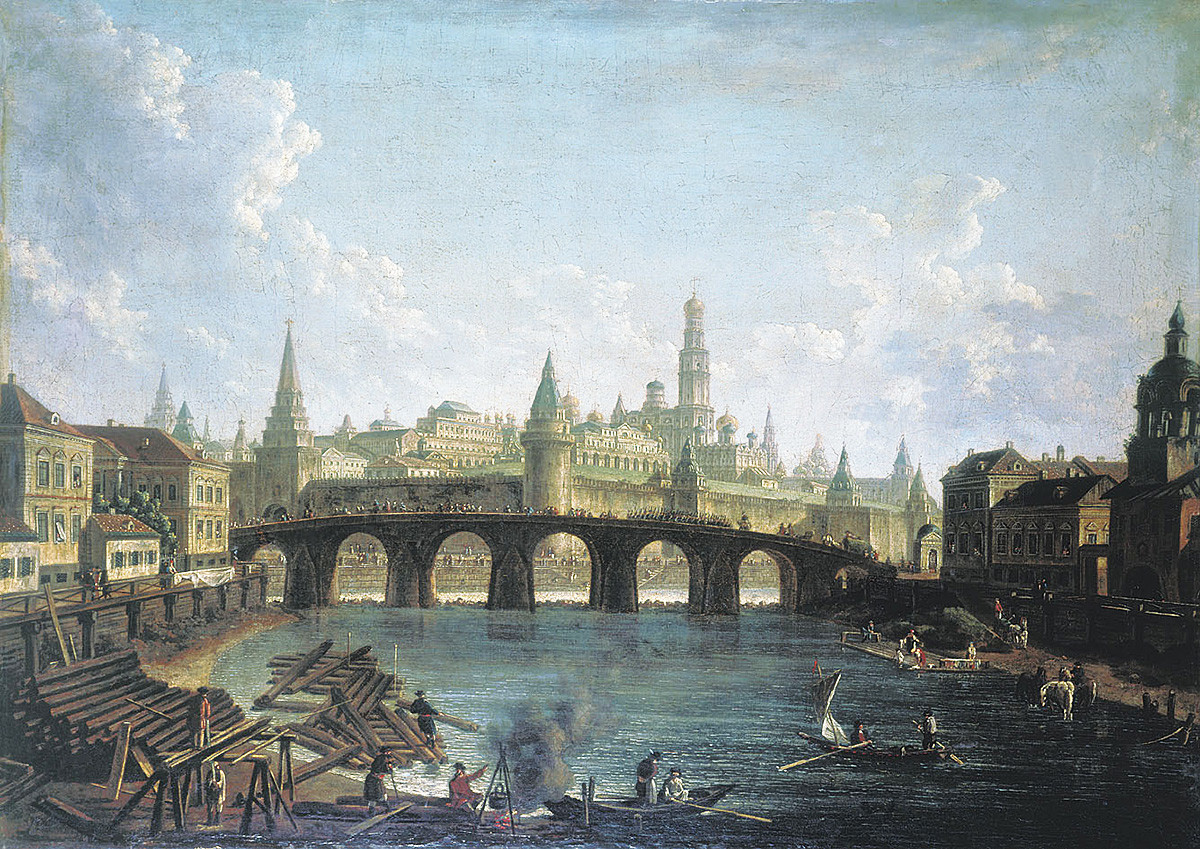
The Moscow Kremlin and the Big Stone bridge by Fyodor Alekseyev
Public DomainThis was the first bridge over the Moskva river, built in the 1680s, during the reign of Sophia (1657-1704), Peter the Great’s half-sister, as the regent of Russia (1682-1689). The bridge was 170 meters long and 22 meters wide. The cost of construction was so high that in Moscow, a saying was popular: “As expensive as the Kamenny Bridge!”
The bridge, along with the Tsar Cannon and the Ivan the Great Bell Tower, was considered one of Moscow’s highlights. A lot of stores, bars, as well as enterprises of different kinds, occupied the huge bridge, and under it were infamous meeting spots, usually for thieves and criminals. With time, however, the bridge slowly began to deteriorate.
In 1858, it was decided to demolish the bridge. It turned out to be so sturdy that parts of it had to be blown up. The bridge was replaced with a three-span metal one, that was also dismantled in 1938, the same year the current Big Stone bridge was constructed.
2. Kitay-Gorod walls and towers: 1538 – 1934 (small parts survived)
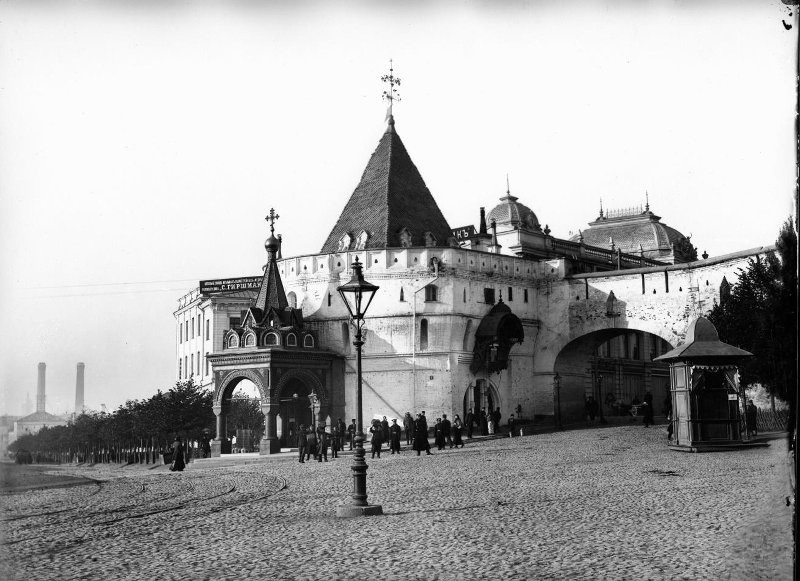
The Varvarka Gates of the Kitay-Gorod wall
MAMM/MDF/Russiainphoto.ruSince 1538, the eastern wall of the Kremlin and the central streets near it were surrounded by Kitay-Gorod walls, a medieval fortification protecting inner Moscow. The wall was created by Petrok Maly (Peter the Small), born Pietro Annibale, an Italian architect in Moscow’s service.
There were initially 4 towers with gates but several extra gates were added later. The wall lost its military functions in the 18th century, but weren’t demolished and became part of the city. In 1925-1926, the restoration of the Kitay-Gorod walls and towers as a historical monument was performed, but in 1933-1934, the unique fortification was barbarously demolished.
Moscow’s Soviet government argued that this was done to further develop the street network, but the places the wall occupied are to this day mostly still vacant. Sadly, only a small part of the original wall has survived behind the Metropol hotel.
3. Strastnoy Monastery: 1654 – 1937
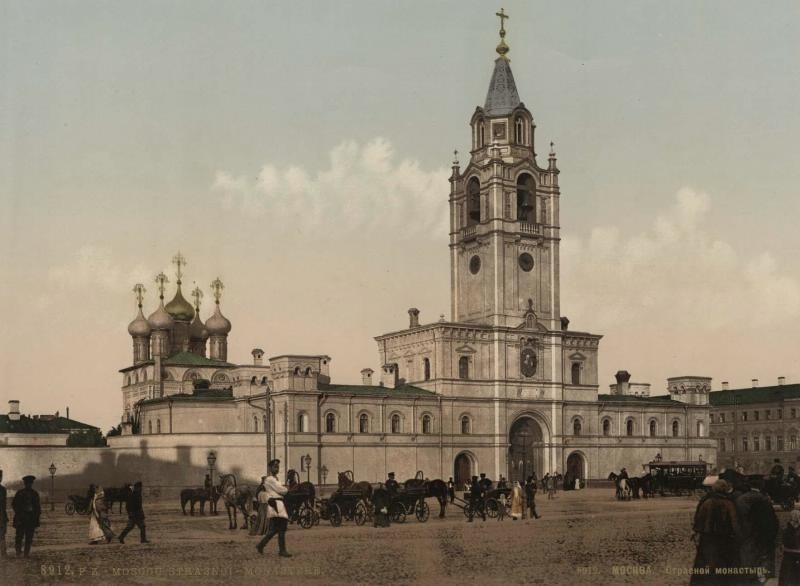
The Strastnoy Monastery
MAMM/MDF/Russiainphoto.ruThe Strastnoy (Passion) Monastery was founded in 1654 on what is now Pushkinskaya Square, one of the main squares in Moscow’s center. Its bell tower was situated precisely where the statue of Alexander Pushkin now stands (moved here in 1950 from the opposite side of the boulevard). The monastery was closed by the Bolsheviks in 1919, but up until 1924, about 200 nuns still lived there; in later years, different institutions, including an anti-religious museum, were housed in the monastery’s buildings and on the premises. And in 1937, the monastery was demolished.
4. Red Gates: 1757 – 1927
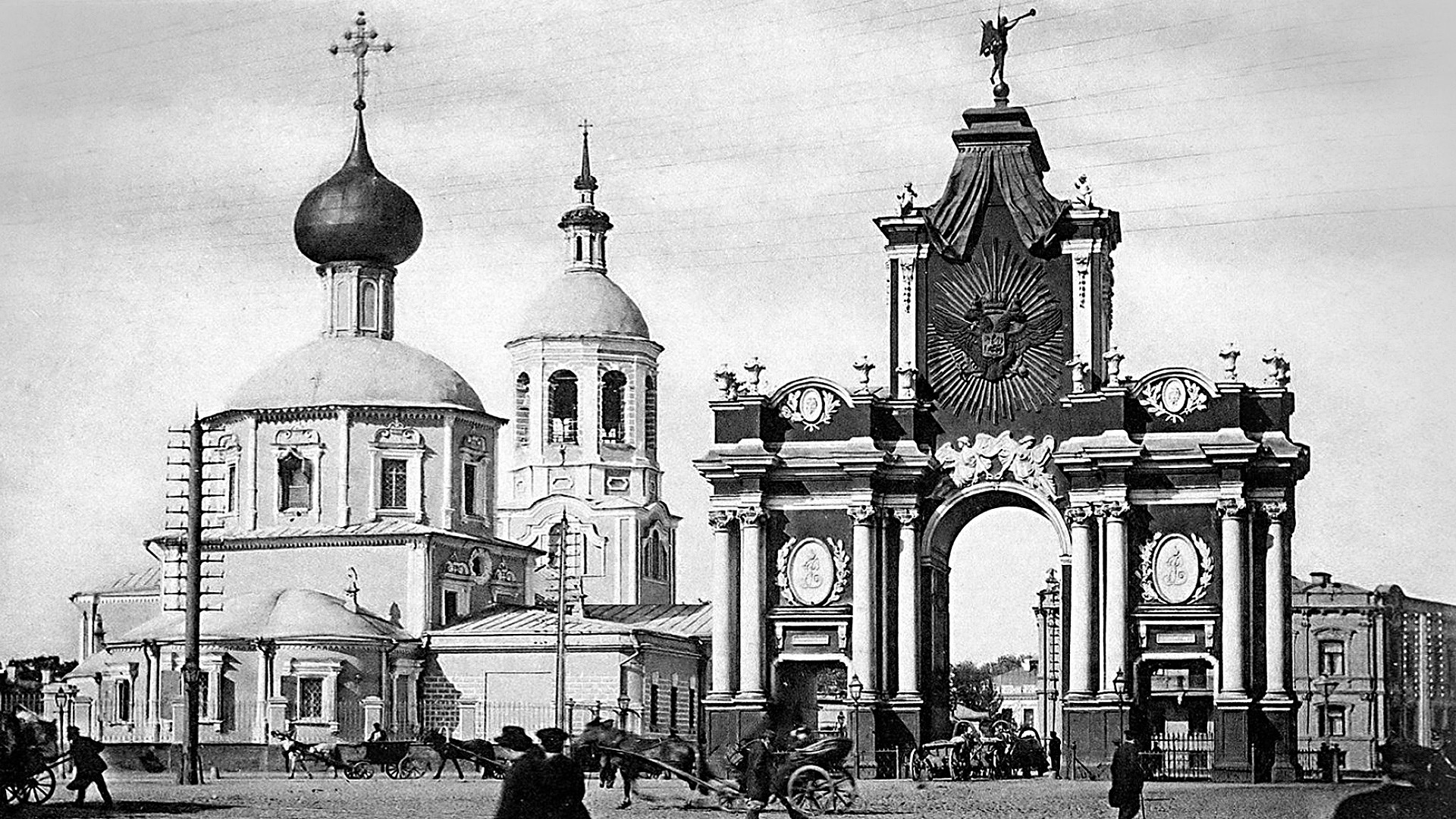
The Red Gates
Archive photoRed Gates (“Krasnye Vorota”) was a triumphal arch situated on the present-day Red Gate Square that, along with the nearest metro station, still bears this name. The first arch appeared here in 1709, by the order of Peter the Great to triumphantly meet him after the victorious Poltava Battle. The original gate was, however, destroyed by fire, as were several subsequent copies. In 1757, architect Dmitry Ukhtomsky created a stone baroque Red Gate, decorated with sculptures, coats of arms of Russian territories, and crowned with a bronze statue of Pheme, the Greek mythological personification of fame. Several times, there were attempts to demolish the Red Gate because of its uselessness, but it survived until 1927, when it was finally demolished on the reasons of it “blocking the way for the traffic”.
5. Sukharev Tower: 1695 – 1934
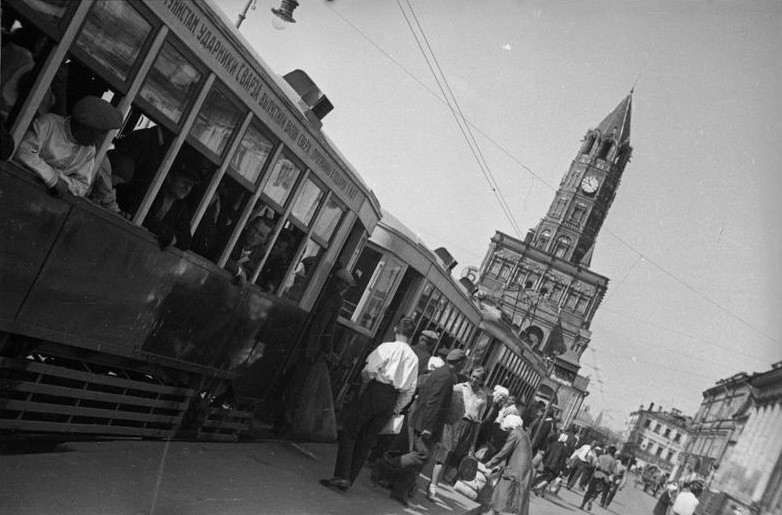
The Sukharev tower
MAMM/MDF/Russiainphoto.ruThe construction of the Sukharev Tower was ordered by Peter the Great after he took the throne from Sophia for good. Designed by Russian military architect Mikhail Choglokov in 1692-1695, the 64-meter high, 40-meter wide structure housed the Moscow School of Mathematics and Navigation, that hosted one of the first observatories in Russia in the highest levels of the tower.
Also, fencing courses were held in a special hall of the tower. In 1829-1892, it was used as a water tower, and under the Bolsheviks, the tower housed a museum. Restored in the 1920s and acknowledged as a historical monument, the tower was nevertheless demolished in April 1934, under a straight order from Joseph Stalin. He wrote: “I consider this decision right. I suppose the Soviet people would be able to create examples of architectural art more majestic and memorable than the Sukharev Tower.”
6. Simonov Monastery: the 1370s – 1930 (several buildings survived)
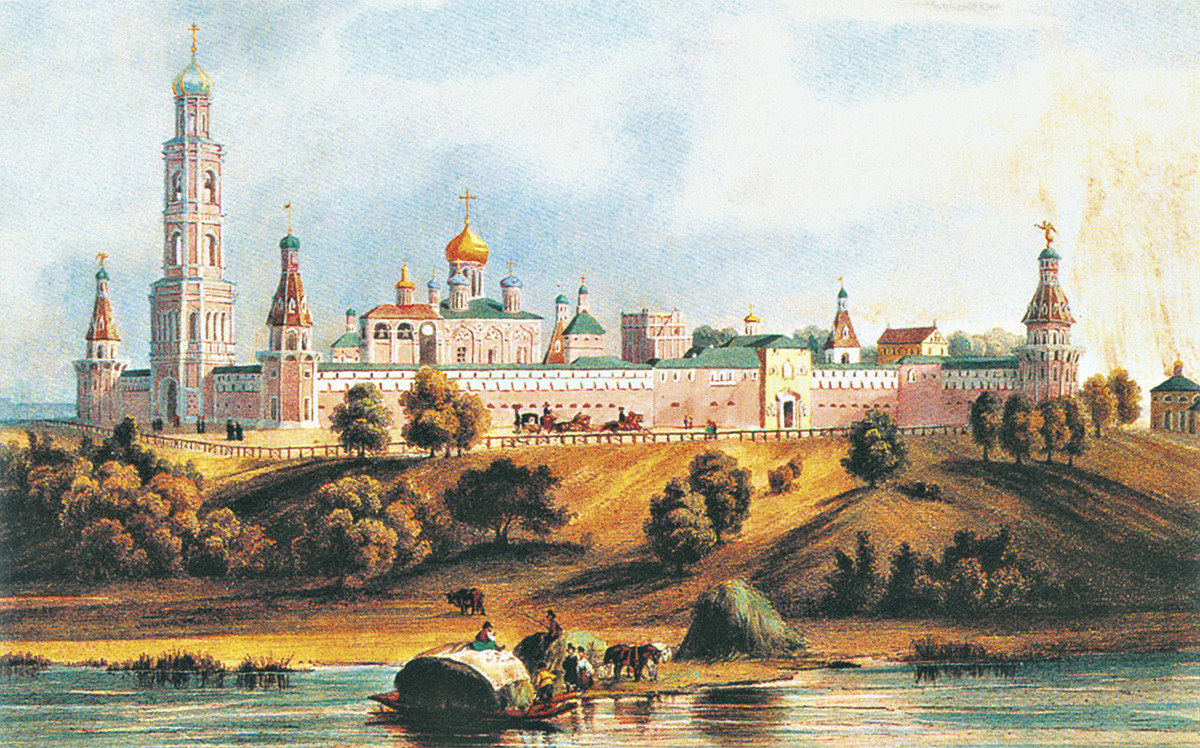
Simonov Monastery in 1846
Public domainFounded in 1370s under Moscow prince Dmitry Donskoy, Simonov Monastery was a huge fortified structure: in the late 17th century, the wall was 825 meters long in total with five towers, three of them still intact today. The monastery was closed in 1923, and in 1930, most of the buildings were demolished by explosion, in order to build the ZiL Palace of Culture, now itself a constructivist historical monument.
The historical necropolis was also destroyed. Parts of the monastery’s wall: three towers, a church and several buildings, luckily survived. They are among the most picturesque examples of 17th-century architecture in Moscow, located on Vostochnaya Street.
7. Church of the Dormition of the Mother of God on Pokrovka Street: 1699 – 1936
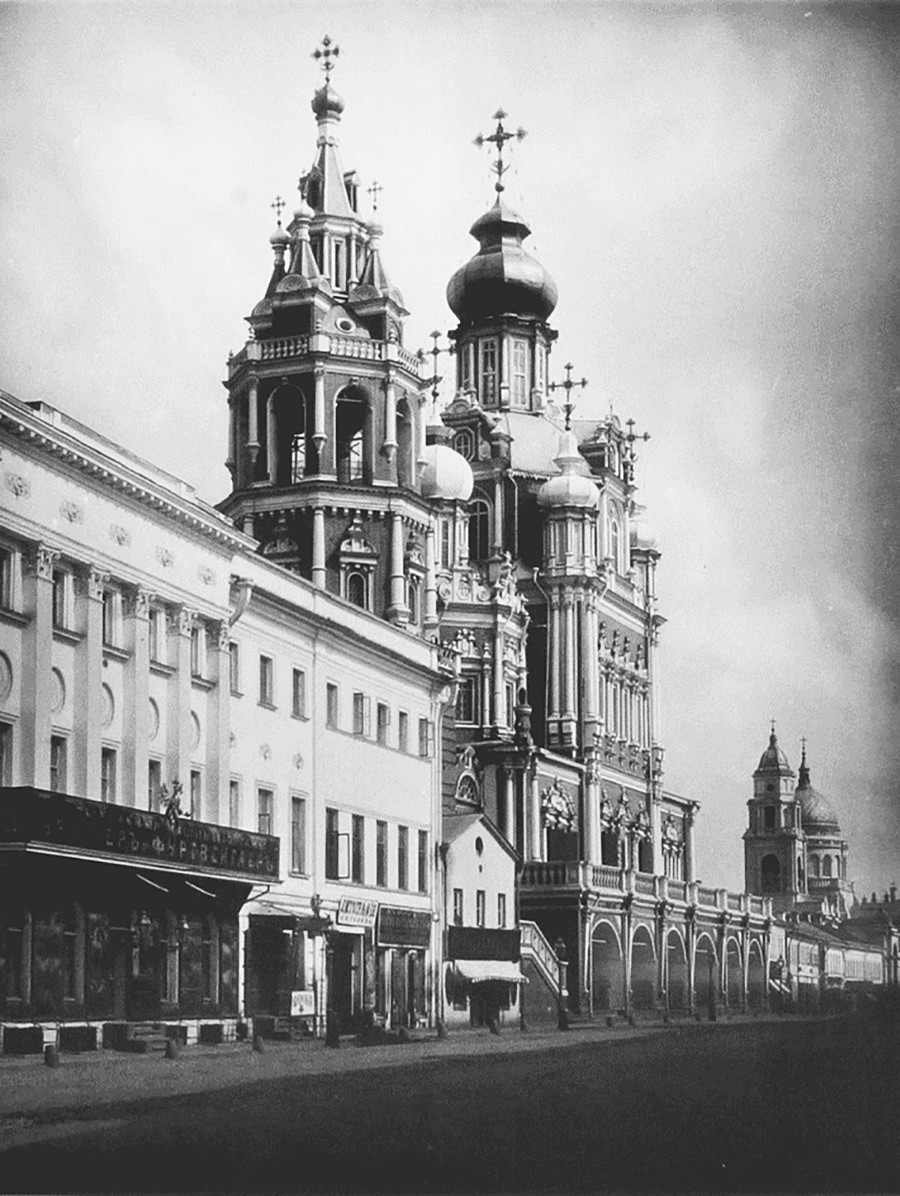
Church of the Dormition of the Mother of God on Pokrovka Street
Archive photoAlthough a wooden church stood in its place earlier, in 1696-1699, at the expense of wealthy Moscow merchant Ivan Sverchkov, the Church of the Dormition of the Mother of God was built on Pokrovka Street, a busy place just outside of the Kitay-Gorod wall. Architect Pyotr Potapov created a masterpiece of Moscow baroque architecture. When Napoleon took Moscow, he expressed his admiration for this church and joked that he could order it to be sawed in parts and moved to Paris. In 1936, the church was demolished on the grounds of “street widening”, but Pokrovka Street wasn’t widened and the church’s lot is still vacant today. Only the clergy house survived at Pokrovka, 5/5. Some parts of the external decor of this church are also preserved in the Donskoy monastery in Moscow.
8. Alexander Nevsky Cathedral: 1917 – 1952
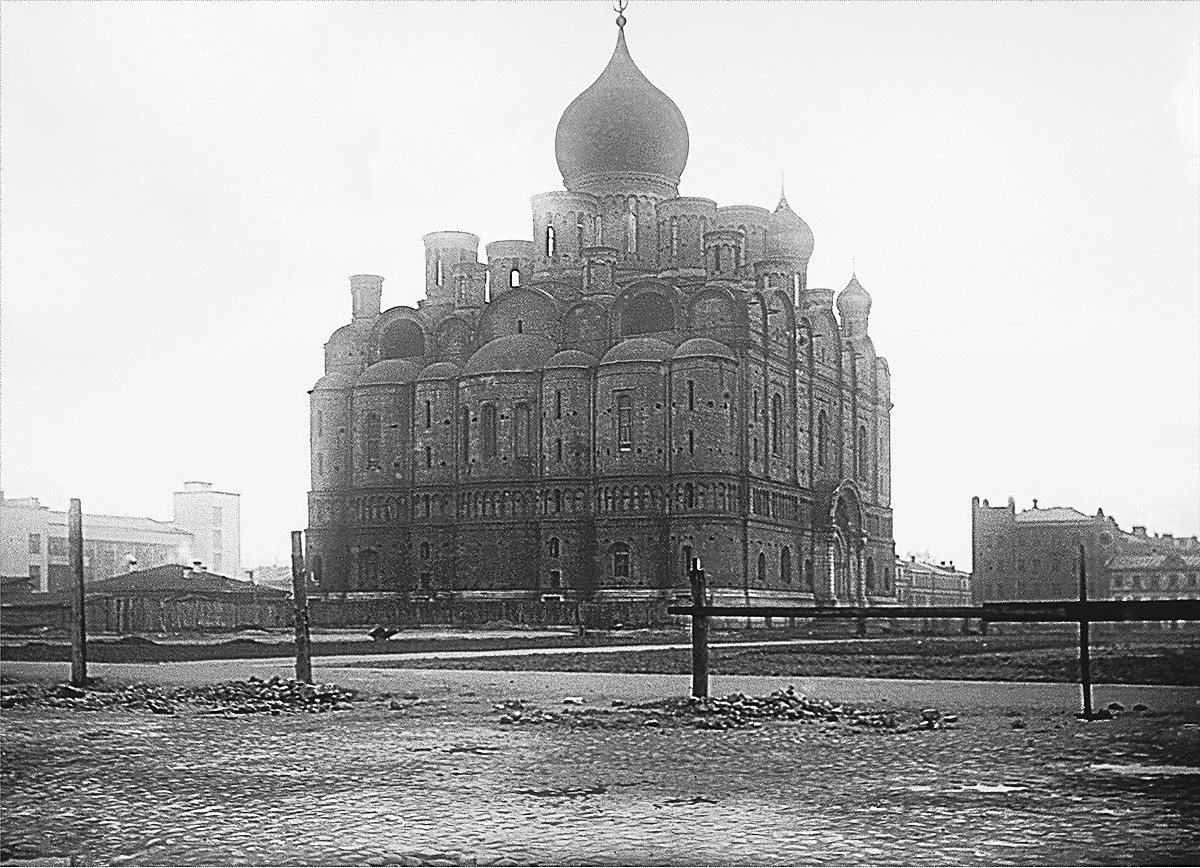
Alexander Nevsky Cathedral
Archive photoThis cathedral was Moscow’s second largest church after the Cathedral of Christ the Saviour. But it was also considered a monument to Russian procrastination: it took half a century just to begin construction. It was decided to build it as early as 1861 – to signify the abolition of serfdom in Russia. But the money needed was only gathered from donors and benefactors by 1894.
The final project was then only approved by 1900, and construction only began in 1913, a year before World War I started. Architect Alexander Pomerantsev created the 21-dome, 70-meter high temple in the ancient Russian style. Although the construction was slowed down by the war, by 1917, the temple was almost completed and already hosted Orthodox services that continued up until 1920. The empty cathedral was then blown up by the Bolsheviks in 1952.
9. Cathedral of Christ the Saviour: 1883 – 1931
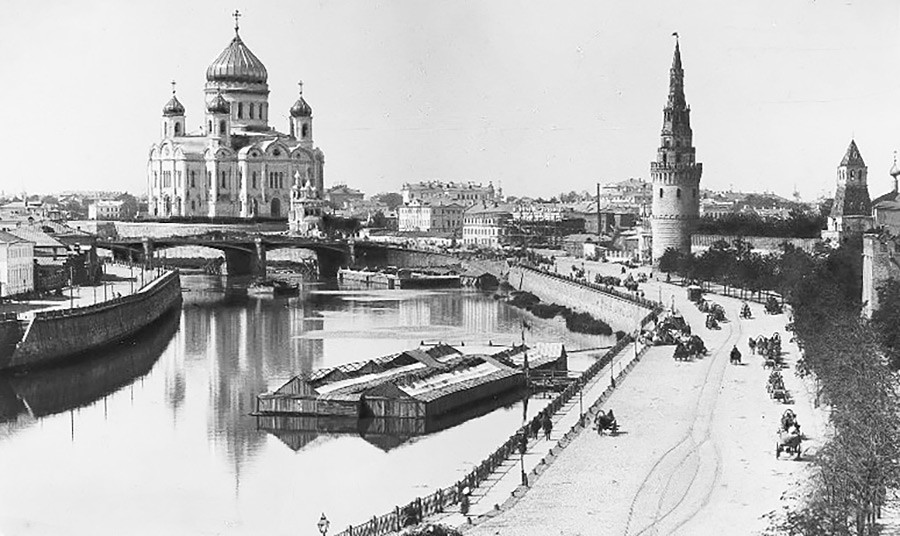
The Christ the Saviour Cathedral (L)
MAMM/MDF/Russiainphoto.ruThe cathedral that was meant to commemorate the Russian victory over Napoleon was founded in 1839, completed in 1860 along the project of the architect Konstantin Ton, and consecrated in 1883.
At 103,5 meters tall, over 15 million rubles in the making, the cathedral became the largest in the country. Russia’s best artists at the time worked on the interior frescoes and overall decorum of the cathedral: Vasiliy Surikov, Ivan Kramskoy, Vasiliy Vereschagin and others.
In 1931, it was decided that the huge building of the Palace of the Soviets must take the place of the cathedral. And in December 1931, it was blown up. Later, the Palace of the Soviets project was canceled, and the swimming pool ‘Moskva’ was built in place of the cathedral. In 1999, a contemporary copy of the original cathedral was constructed on the same place. But the new cathedral is not a brick structure, it is made out of concrete, just like a common city building.
And the new interior decoration cannot match the original one. There were many simplifications to reduce the construction’s cost – white-stone facing was substituted for marble, domes were tinted with gold using less gold and cheaper methods, etc. However, the Cathedral of Christ the Saviour is still the largest cathedral of the Russian Orthodox church.
10. Palace of Vasiliy Golitsyn in Okhotny Ryad: 1680s – 1934

Palace of Vasiliy Golitsyn in Okhotny Ryad
Archive photoVasiliy Golitsyn (1643-1714) was a renowned political figure under Sophia, Peter the Great’s half-sister and regent. He controlled all Russian foreign affairs of the era, was immensely rich and lived a European style of life in the largely rural area of Moscow. He ordered a magnificent palace to be built for him on Okhotny Ryad Street. French diplomat Foy de la Neuville called the palace “one of the most magnificent houses in Europe” and compared it to the Kremlin palaces.
After Golitsyn’s disfavor and death, the palace changed hosts many times. In the 1870s, its inner decorations were torn down, and by the 1910s, it was turned into a fish processing yard. In the 1920s, the palace was partly restored. The palace was a unique structure, the finest example of palace architecture from the 17th century, but by 1934, it was also demolished. In 1932-1935, the building of the Council of Labor and Defense was built in its place. It now houses the State Duma of Russia.
Clickhere to see Moscow’s 9 most unusual houses
If using any of Russia Beyond's content, partly or in full, always provide an active hyperlink to the original material.
Subscribe
to our newsletter!
Get the week's best stories straight to your inbox